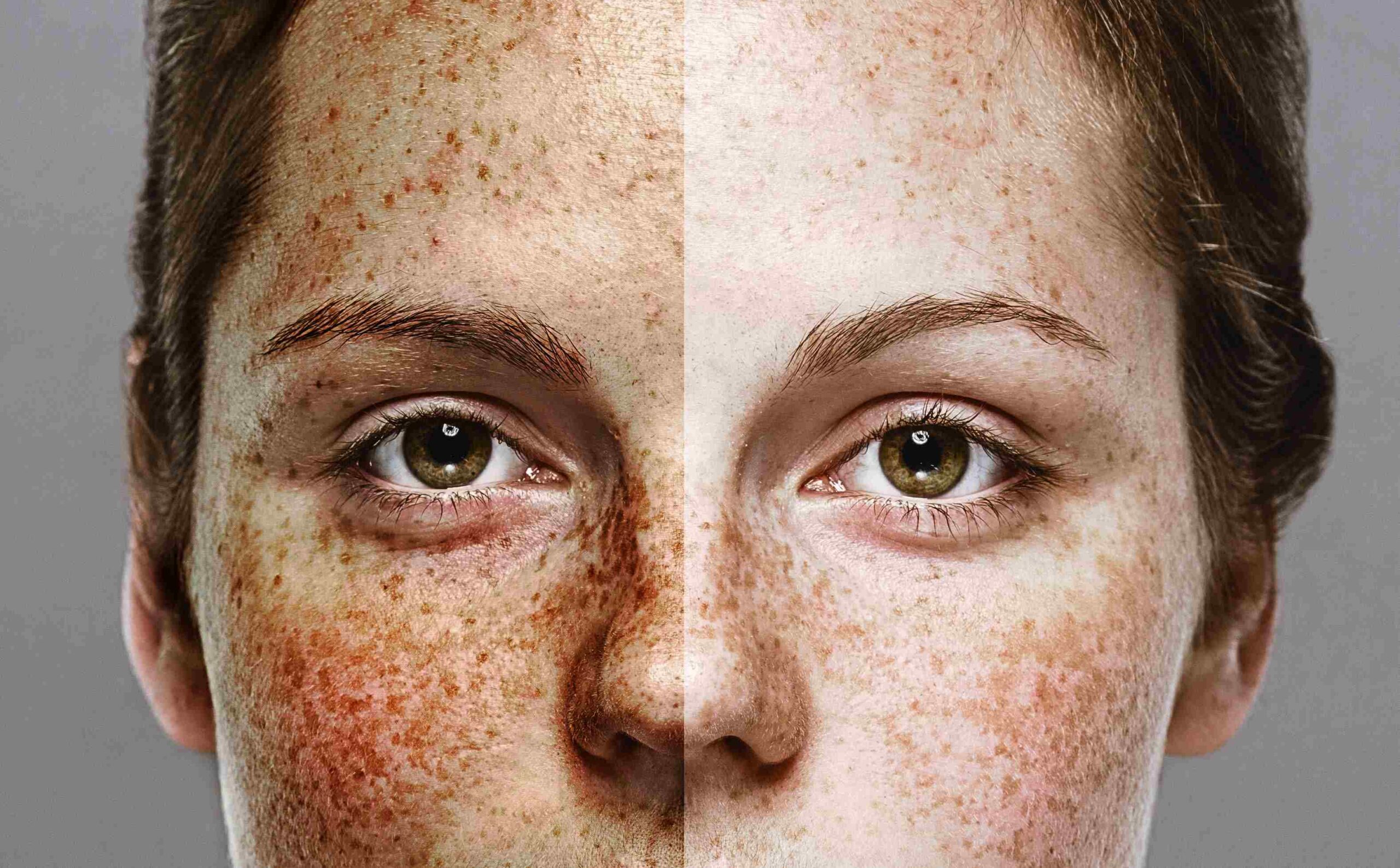FAQ about IPL Photofacial Therapy in New Jersey
IPL Photorejuvenation treatment is ideal for people with lighter skin types (Fitzpatrick 1 to 3 and some light 4s) who have broken capillaries, rosacea, acne rosacea, and sun-spots. IPL Photorejuvenation is not suitable for darker skin types (dark 4 to 6) due to excessive melanin in the skin. It is also not suitable for melasma which can be made worse by IPL Photofacial. We recommend a consultation and full assessment prior to the procedure.
The procedure for a full face takes approximately 45-60 minutes and can be done as a lunch time procedure due to minimal down time.
Usually, most people have minimal discomfort with IPL sessions, and it feels like rubber-band snaps. When higher power needs to be used, a prior application of numbing cream would be beneficial. Compared to medical grade chemical peels, there is minimal to no downtime with this procedure.
Once the IPL Photorejuvenation is found to be the right option, we recommend 4-6 sessions done every 4-6 weeks intervals or until the desired results are achieved. After that maintenance sessions once in 4 months would suffice to prolong the benefits achieved.
As with most skin treatments avoiding UV exposure of any source prior and in between sessions is essential for safety and best results. Spray tanning also should be avoided. There should be no make up prior to the procedure. Using sunscreen is a must between the sessions. After IPL procedure face masks should be avoided or minimized for about 5 days to prevent bacteria from the mouth getting on the treated skin via the contaminated mask. Makeup may be used after the procedure but we recommend a 100% mineral powder makeup. Its better to use a newly opened makeup to minimize contamination.
Not all IPL devices are made the same. The machines can be cheap quality ones costing a couple of thousand dollars made in some eastern countries, to some costing six figures which have state of the art delivery system, several electronic sensors, efficient cooling system, very specific filters, photon recycling methods, and sophisticated safety mechanisms. Hence if someone says, “I had IPL treatments in the past” does not mean anything unless we know the type of device, and the parameters used and if these devices are serviced regularly. Hence getting a full assessment and consultation with a qualified physician will go a long way in choosing the right treatment.
When done by an experienced medical professional on the right patient, IPL is very rewarding for reds, browns and uneven skin tone and overall skin rejuvenation. Not everyone is suitable for IPL photofacials and individual results and number of sessions needed to achieve the desirable outcome vary. Certain conditions like rosacea and acne need ongoing maintenance sessions to control the flare up.
While IPL is a great option to rejuvenate the skin and reduce the imperfections, it is not suitable for darker skin types, especially Fitzpatrick dark 4, 5 and 6. Hence it is crucial to get evaluated with an experienced physician who understands the physics of lasers and light, and the biological interaction of these with the skin.
Brown spots from sun damage, do not come back, until you have further UV exposure again. Hence it is important to follow sun protection protocol and avoiding direct and prolonged sun exposure. In some patients combined treatment with IPL, and medical grade chemical peels will give superior and long lasting results, especially when the home skin care is followed diligently.




